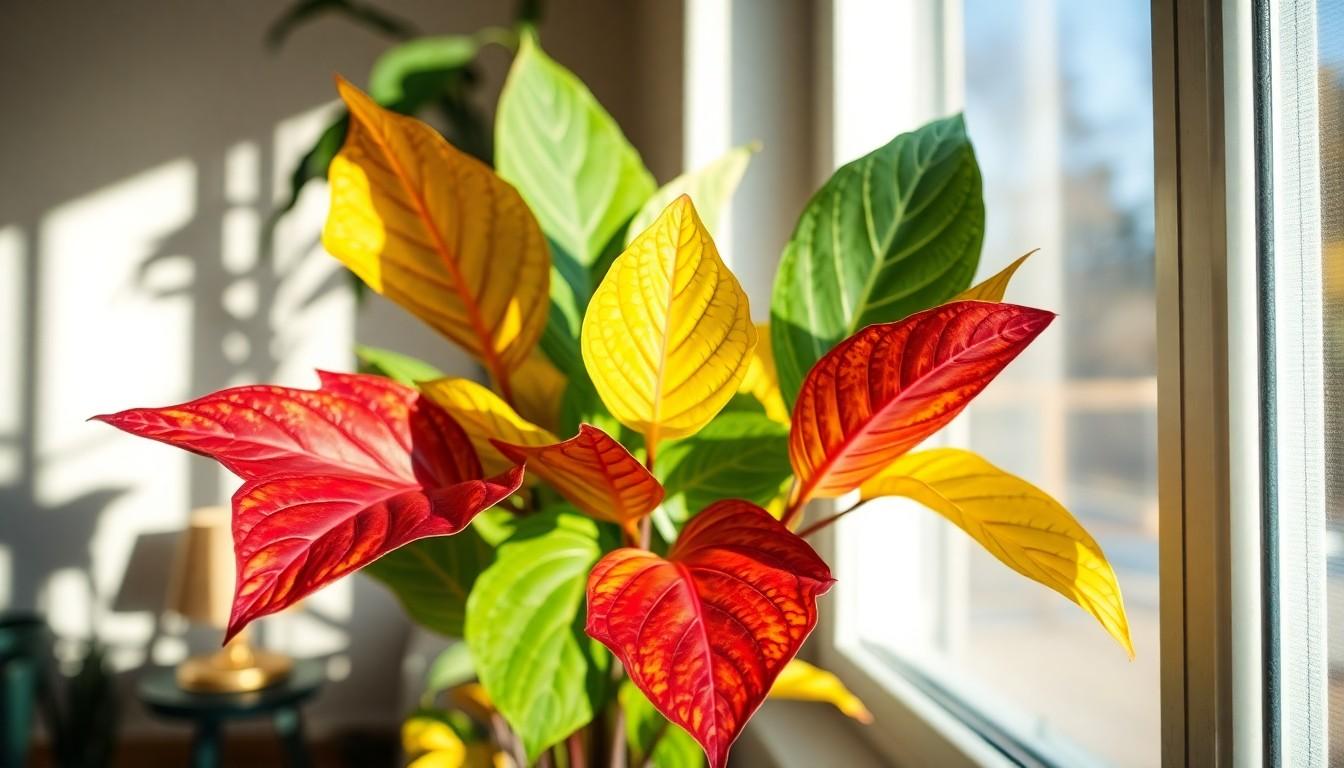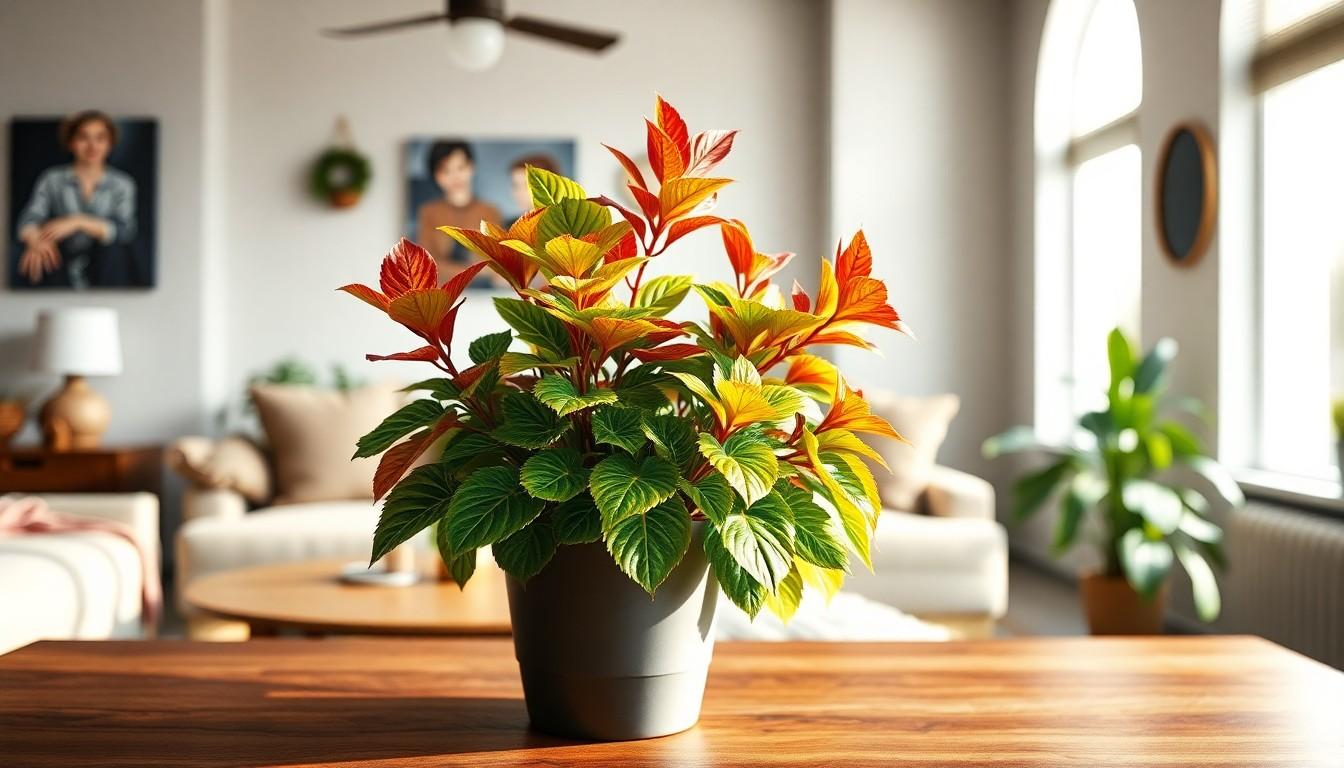If you’re on the hunt for a plant care that’s as vibrant as your personality, look no further than the croton! With its kaleidoscope of colors and striking foliage, this tropical beauty doesn’t just sit pretty; it demands attention and a little TLC. But don’t worry—caring for a croton indoors isn’t rocket science. It’s more like a fun game of “how much light can I get without turning into a crispy critter?”
Croton Plant Indoor Care
Croton plants exhibit vibrant colors, requiring specific care to thrive indoors. Light plays a crucial role in their growth. Bright, indirect sunlight is ideal, while direct sunlight can scorch the leaves. Maintaining a consistent light source helps keep the foliage colorful.
Temperature ranges between 60°F and 80°F benefit the croton. It’s essential to avoid cold drafts, as they can lead to leaf drop. Humidity levels should stay above 50%, which fosters strong growth. If the air becomes too dry, misting the leaves or using a humidifier can help.
Watering remains key to healthy croton plants. Allow the top inch of soil to dry out between waterings, preventing root rot. Overwatering can lead to yellowing leaves, while underwatering causes wilting. It’s critical to strike a balance to ensure proper hydration.
Fertilization supports excellent growth. During the growing season, use a balanced liquid fertilizer every four to six weeks. Avoid fertilizing during the winter months, as the plant’s growth slows down. Pruning may also be necessary to maintain desired size and shape.
Pests can pose a challenge for croton plants. Common pests include spider mites, mealybugs, and aphids. Regularly inspecting leaves helps identify issues early. If pests appear, treating them with insecticidal soap or neem oil is effective.
Choosing the right potting mix influences overall health. A well-draining potting mix, enriched with organic material, promotes robust growth. Repotting every couple of years helps refresh the soil and provides space for growth. Following these guidelines ensures the croton’s vibrant foliage remains a striking feature in any indoor space.
Ideal Conditions for Growth
Croton plants flourish indoors under specific conditions that promote their vibrant foliage. Understanding their needs ensures successful growth.
Light Requirements
Bright, indirect sunlight serves as the foundation for croton plant well-being. Placing the plant near a window with filtered light encourages optimal leaf color and shape. Too much direct sunlight may scorch leaves, while insufficient light leads to leggy growth. A balance in light exposure supports their stunning visual appeal in indoor spaces. Moving the plant slightly to find the right light source enhances health.
Temperature and Humidity
Temperatures between 60°F and 80°F support healthy croton growth. Avoiding extreme changes shields the plant from stress, keeping foliage robust. Humidity levels above 50% are crucial for vibrant leaves. Utilizing a humidifier or placing the pot on a pebble tray filled with water helps maintain adequate moisture. Frequent misting can provide the necessary humidity boost, especially during dry seasons. These temperature and humidity parameters create an ideal environment for the croton’s lively appearance.
Watering and Feeding
Watering and feeding a croton plant involves attention to both timing and quantity. Keeping the soil consistently moist but not soggy supports optimal growth.
How Much to Water
Watering the croton requires monitoring soil moisture. The top inch of soil should dry out between waterings. During the growing season, usually spring and summer, the plant may need water once a week. In fall and winter, it may require less frequent watering, up to every two weeks. Overwatering can lead to root rot, so ensuring proper drainage is essential.
Fertilizing Your Croton
Fertilizing enhances the croton’s vibrant colors and growth. Applying a balanced liquid fertilizer every four to six weeks during the growing season promotes healthy development. Diluting the fertilizer to half-strength prevents potential fertilizer burn. In fall and winter, cease fertilization as the plant’s growth slows. Adjusting the feeding schedule based on the plant’s condition maximizes its health and vitality.
Common Pests and Diseases
Croton plants are susceptible to various pests and diseases that can affect their health and appearance. Identifying these issues early ensures swift action to preserve the plant’s vibrancy.
Identifying Issues
Spider mites often leave tiny webs on leaves, causing discoloration. Mealybugs appear as fuzzy white spots, clustering in leaf axils or on stems. Fungal infections may manifest as dark spots on the leaves, indicating potential overwatering or poor air circulation. Aphids can distort new growth, resulting in curled leaves. Regular inspections, particularly for the undersides of leaves, help detect these problems before they escalate.
Treatment Options
Insecticidal soap effectively tackles spider mites and mealybugs, breaking down their protective coatings. Neem oil serves as a natural remedy, deterring various insects while promoting healthier plants. For fungal infections, a fungicide can prevent further spread. Adjusting watering practices to prevent soggy soil assists in managing root rot. Increased air circulation around the croton plant can reduce humidity, minimizing the risk of fungal issues. Complete removal of heavily infested leaves may also be necessary for better overall plant health.
Pruning and Maintenance
Pruning and maintenance are essential for keeping a croton plant healthy and vibrant. Regular pruning encourages bushier growth and enhances the plant’s overall appearance. Trim back any leggy stems to promote fullness, and remove dead or yellowing leaves to maintain aesthetic appeal.
Inspect the croton for any signs of pests or disease during maintenance routines. Catching issues early helps preserve the plant’s beauty and vitality. Cleaning the leaves with a damp cloth not only improves their appearance but also removes dust and potential pests.
Provide adequate light and humidity while maintaining the plant. Environments with bright indirect sunlight encourage ideal foliage development, while humidity above 50% supports growth and prevents leaf drop. During winter months, consider placing the plant near a humidifier or pebble tray to enhance moisture levels.
Consider the plant’s growth rate when planning pruning sessions. Crotons grow rapidly during the peak growing season, from spring to early summer. Frequent inspections and adjustments to watering and feeding schedules may be necessary to keep up with this growth.
Apply a balanced fertilizer every four to six weeks during the growing season to promote vibrant leaf colors. The diluted mixture nourishes the croton without risking fertilizer burn. Cut back on fertilization in fall and winter as plant growth slows, allowing for a natural rest period.
Choose well-draining soil to prevent root rot and ensure healthy growth. Repotting every couple of years refreshes the soil and supports the croton’s continued vibrancy. Consistent maintenance, careful attention, and proper techniques help cultivate a striking indoor plant.
Lively Touch to Any Space
Caring for a croton plant indoors can be a rewarding experience. With its vibrant colors and unique foliage it adds a lively touch to any space. By providing the right balance of light humidity and temperature one can ensure the plant thrives.
Regular maintenance such as pruning and pest inspections is crucial for keeping the croton healthy. Adjusting watering and fertilization schedules during the growing season will further enhance its growth. With a little attention and the right techniques anyone can enjoy the beauty of a flourishing croton in their home.


